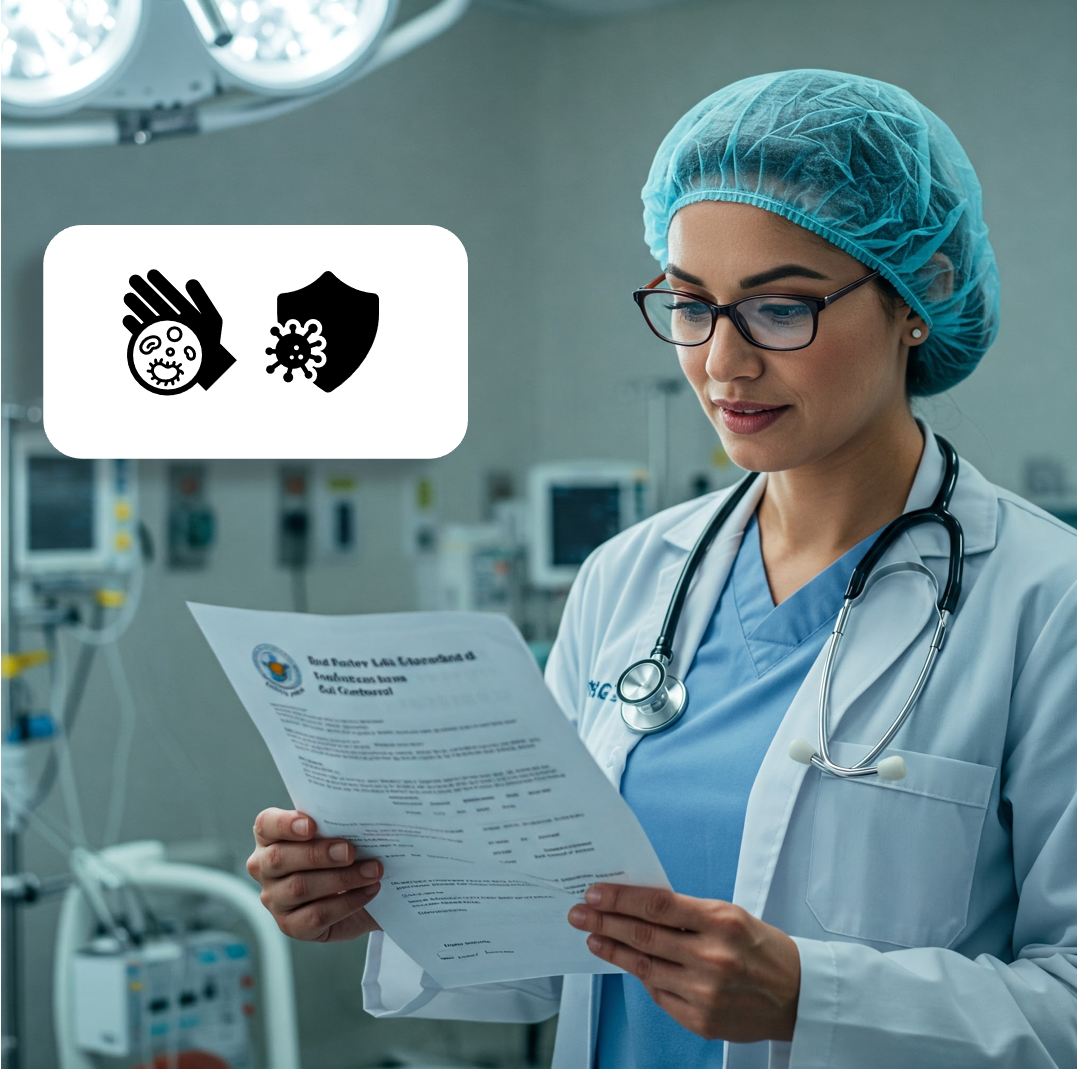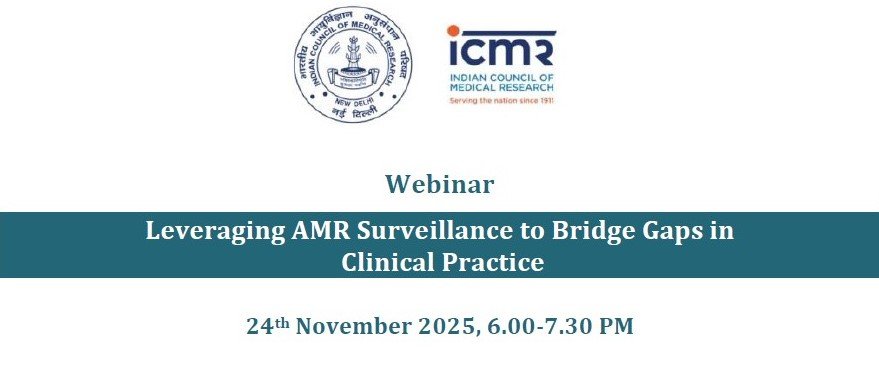Disclaimer: This post is for academic purposes only. Please read the original document if you intend to use them for clinical purposes.
This document summarizes key themes, important ideas, and factual information from the provided CDC guidance on Infection Prevention & Control (IPC) in Healthcare personnel (HCP) / Healthcare workers (HCWs), focusing on selected infectious diseases.
Scope:
The document provides updated guidance for IPC in HCP regarding the epidemiology and control of selected infections transmitted among HCP and patients. It is a comprehensive resource aimed at various stakeholders in healthcare settings. The guidance is intended for Healthcare organizations (HCOs), Occupational health services (OHS), IPC professionals, and other HCP.
Theme:
The guidance consistently emphasizes several core themes for managing infectious diseases in HCP:
- Work Restrictions and Exclusion: A primary focus is on defining clear criteria for excluding HCP from work following exposure or diagnosis of specific infections to prevent further transmission within healthcare settings. This is a recurring recommendation across almost all diseases reviewed (e.g., Diphtheria, Group A Streptococcus).
- Postexposure Prophylaxis (PEP) and Vaccination: The document frequently outlines CDC recommendations for PEP, vaccination, and chemoprophylaxis for exposed or infected HCP. This proactive approach aims to mitigate the risk of infection and subsequent transmission.
- Laboratory Testing and Diagnosis: The importance of accurate and timely laboratory testing (e.g., culture, PCR, RT-PCR, rapid antigen tests) is highlighted for diagnosis, confirming eradication of carriage, and guiding management decisions.
- Epidemiological Investigation and Outbreak Management: The guidance consistently stresses the need for epidemiological investigation, especially during outbreaks, to identify sources, prevent further cases, and determine appropriate interventions (e.g., Diphtheria, Group A Streptococcus, Mumps, Meningococcal Disease).
- Transmission Pathways: The document details the common modes of transmission for each disease, which informs infection control practices (e.g., respiratory/oral/nasal secretions for Diphtheria, skin lesions/droplets for VZV).
- Clinical Features and Incubation Periods: For each disease, a description of typical clinical presentations, varying symptoms, and incubation periods is provided, aiding in early recognition and management.
Disease-Specific Highlights:
The document provides specific recommendations and narratives for a range of infectious diseases:
A. Diphtheria
- Recommendations: For exposed HCP, regardless of vaccination status, administer PEP as per CDC recommendations and exclude from work and obtain nasal and pharyngeal swabs for diphtheria culture.
- Transmission: Occurs via deposition of respiratory, oral, or nasal secretions, discharge from skin lesions, or, rarely, fomites from an infected source person on the mucus membranes of a susceptible host. Close, unprotected face-to-face contact is considered an exposure.
- Clinical Features: Hallmark of respiratory diphtheria is a tough, grayish-white pseudomembrane over the tonsils, the pharynx, or larynx. Forcible removal causes bleeding.
- PEP: Includes diphtheria vaccine and a single dose of intramuscular benzathine penicillin G or a 7- to 10-day course of oral erythromycin. Importantly, administration of PEP or treatment for diphtheria does not always eliminate the carrier state.
B. Group A Streptococcus (GAS)
- Recommendations (for HCP with exposure or suspected infection): Administer chemoprophylaxis, exclude from work until 24 hours after the start of effective antimicrobial therapy, and obtain a sample for GAS testing 7-10 days post-prophylaxis. If positive, repeat chemoprophylaxis and exclusion.
- Healthcare-associated Transmission: Documented from patients to HCP and HCP to patients. HCP who were GAS carriers have been linked to outbreaks of surgical site, postpartum, and burn wound infections.
- Carriage Sites: GAS carriage has been documented in the pharynx, the skin, the rectum, and the female genital tract of the colonized personnel.
- Diagnosis: Laboratory testing is necessary to confirm the diagnosis due to mimicking symptoms with viral pharyngitis. Throat culture remains the “gold standard.”
- Outbreaks: Even one case of post-partum or post-surgical GAS infection typically prompts an epidemiological investigation. Screening of HCP during outbreaks may include culturing throat, anus, vagina, and skin lesions.
C. Mumps
- Work Exclusion: HCP with parotitis should be excluded from work for 5 days after onset of parotitis. For mumps without parotitis, exclusion is for 5 days after onset of the first symptom.
- Asymptomatic Infection: Approximately 20% of infected persons can be asymptomatic. Transmission can occur from asymptomatic persons.
- Transmission in Healthcare Settings: While infrequent, mumps transmission in healthcare settings among HCPs and patients has been reported.
- PEP: There is no PEP for mumps.
- Outbreak Vaccination: During an outbreak, administer mumps vaccine to HCP according to CDC recommendations. Additional doses, including a third, may be recommended.
D. Pertussis
- Diagnosis: Culture is considered the ‘gold standard‘,” but “PCR (Polymerase chain reaction) provides sensitive results more rapidly.”
- PEP: Vaccinated HCP may still be susceptible to pertussis due to waning immunity, lack of response to the vaccine, immunosuppression, or other factors. Therefore, vaccination does not preclude the need for PEP, when indicated. Preferred agents are Azithromycin, Erythromycin, and Clarithromycin.
E. Rabies
- Clinical Features: Initial symptoms are non-specific and very similar to those of an influenza-like illness.” As the disease progresses, patients may experience delirium, abnormal behavior, hallucinations, hydrophobia (fear of water), dysphagia, and insomnia.
- Diagnosis: No single test is sufficient to rule out rabies in a living person. Multiple ante-mortem tests on saliva, serum, spinal fluid, and nuchal skin biopsies are necessary.
- PEP: The purpose of PEP is to prevent the rabies virus from establishing infection in the neural tissue of the host.Decisions are typically made on a case-by-case basis after discussion with public health authorities.
F. Rubella
- Clinical Features: Characterized by a mild, maculopapular rash; lymphadenopathy; and fever. A significant concern is the risk of congenital infection and serious consequences when infection occurs during pregnancy, especially in the first trimester.
- Infectious Period: Persons with rubella can shed virus from 7 days before to 7 days after rash onset.
- Asymptomatic Infections: Approximately 25% – 50% of rubella infections are asymptomatic.
G. Varicella-Zoster Virus (VZV)
- Varicella (Chickenpox): Contagious from 1-2 days before rash onset until all lesions have crusted.
- Herpes Zoster (Shingles): Less contagious than varicella. Infectious when the rash is vesicular, and no longer infectious to others once the rash has crusted over. Risk of spread is low if the rash is covered.
- Transmission: Healthcare-associated transmission has been documented.
- Clinical Features: Shingles usually presents as a vesicular rash with pain and itching in a localized dermatomal distribution. Disseminated rash can occur, mainly in immunocompromised persons.
H. Special Populations: Pregnant HCP
- Immunocompromised State: Pregnant HCP are temporarily immunocompromised.
- Risk Assessment: While pregnancy itself does not change HCP risk for exposure to infectious diseases,”pregnant individuals may make persons at higher risk for complications of some diseases, such as varicella and the risk for developing pneumonia, and may pose risks to their fetus, such as development of congenital varicella syndrome.
- Counselling: The document emphasizes counselling HCP, including those who are pregnant or intending to become pregnant.
Conclusion
This briefing document provides a concise overview of the critical information contained within the CDC/HICPAC guidance on infection control for healthcare personnel, highlighting the emphasis on prevention, containment, and informed decision-making in healthcare settings.
Citation: CDC. Infection Control in Healthcare Personnel: Epidemiology and Control of Selected Infections Transmitted Among Healthcare Personnel and Patients (2024)









